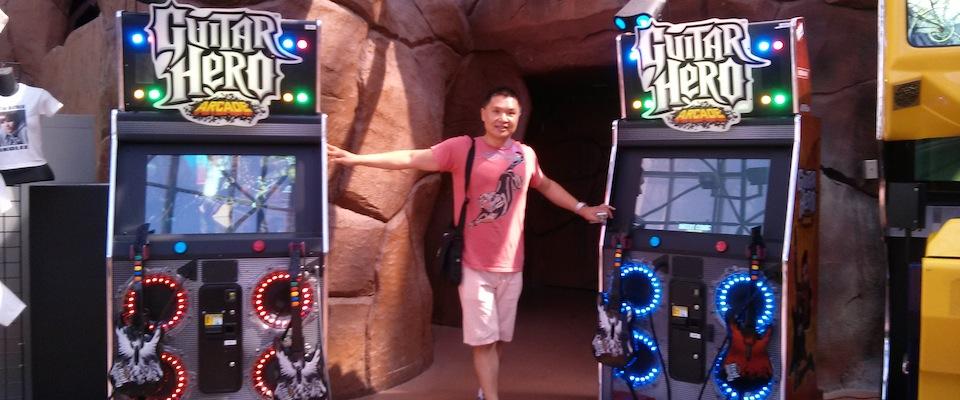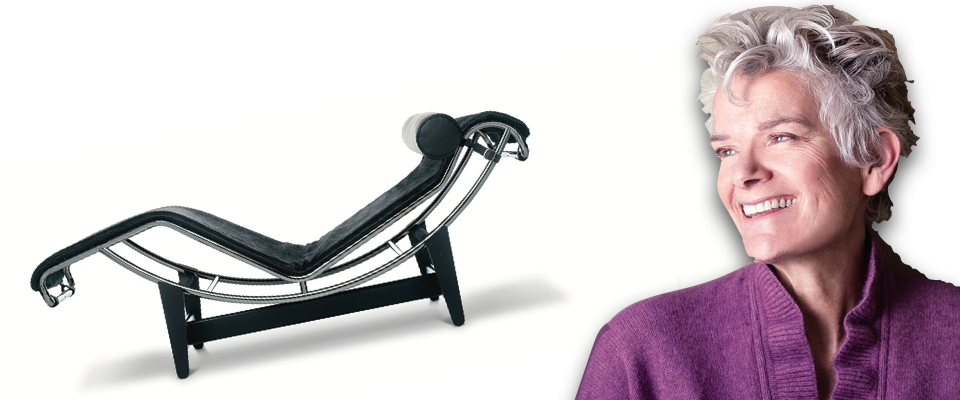If you’ve ever sat in a rocking chair, you understand why every grandparent seems to own one. The gentle rocking mimics the soothing motion of a crib. It’s an ingenious, old-fashioned piece of seating bliss.
Now imagine a rocking chair that even a Millennial might settle into: Not only does it relax you, but it charges your iPhone at the same time.
The chair, nicknamed Volta, harnesses the rocking motion of the sitter to generate energy. It’s the invention of four undergraduates at UC Berkeley as part of their final project for the Interactive Seating Design Competition—a novel interdisciplinary class offered by the Jacobs Institute for Design Innovation.

Volta’s student designers—Matthew Cheung, Jessica Chiu, Julia Solano and Nick Firmani—recently returned from Washington, D.C., where they earned a Maker of Merit award representing UC Berkeley at the country’s first National Maker Faire, a competitive festival celebrating innovative technology.
Greg Niemeyer, an associate professor specializing in art practice, who developed the course with biology professor Robert Full and associate professor of electrical engineering and computer science Björn Hartmann, said that the goal of the class was to get students to design “smart chairs” that improve some aspect of sitting with mechanical, electronic and software changes. The trio considered more sophisticated projects involving mobile software design, but they decided that enhanced chairs would have greater societal benefits than another “app innovation.”
“We all sit too often and too long, and that produces increases in risk factors and diseases,” says Niemeyer. “So we thought, how can we make sitting more interactive so you’re not a passive sitter but an active sitter?”
Enter the Volta. A person rocking in the chair causes a pendulum beneath the seat to start swinging. The pendulum causes gears to turn in a motor, which in turn powers batteries attached to the pendulum. The batteries are hooked up by circuits to a FireStorm board, which is an ultra-low-power microcontroller that can be used to power the electronics attached to the chair.
“That was the perfect choice for us because it generates all the power that it uses itself, so we had to go with something that wouldn’t use a lot of power,” says Firmani, who was the principle computer science engineer for the team.

Volta is efficient at producing energy, but the team hasn’t quite figured out what to do with the power. Originally they wanted to create a mobile app that would allow a user to link up with an e-paper display—the same kind you’ll find on a Kindle—that is attached to the chair. The app would allow users to track how much energy they had produced through rocking, and would then post the figure on a leaderboard where other users could compare energy production.
The team had other ideas for boosting the entertainment value of their project, such as creating a phantom playback option for the app, which would cause the chair to continue the rocking pattern established by a user after they were no longer sitting. But a more pragmatic demand forced the team in a different direction.
“Ultimately what ended up happening was people would keep saying, ‘Hey, where’s the plug to charge my phone?’” says Chiu.
Volta is already equipped with Bluetooth low energy (BLE), so the team members simply installed a USB jack, which made it possible for a user to charge a mobile device. According to Chiu, the chair charges devices with about the same effectiveness as a typical wall plug.
Building the chair proved almost as difficult as transforming it into an electrical generator. This makes sense—what 20-year-old is carrying around the knowledge of how to build a rocking chair? Chiu, who has experience with traditional woodworking and metalworking, incorporated these techniques into the chair. This resulted in a beautiful, polished chair, but it added unexpected weight.
“Our chair ended up weighing like 80 pounds,” Chiu says. “So it’s not a very easy thing to move around campus, and that was a huge challenge.”
But these complications were par for a course that demands interdisciplinary collaboration. A major hope at the Jacobs Institute—which is offering classes now but will open as a facility in the fall— is that students from different fields will learn how to communicate and create together.
“One of the abilities that we want our students to graduate with is the notion that they connect across domains of knowledge, across domains of expertise,” Niemeyer explains. “That means being able to have a dialogue with people from other disciplines, and being able to collaborate and establish common value structures across disciplines.”
The Volta team included members interested in aerospace engineering, architectural design, mechanical engineering and computer science. “I think not only with this class, but Berkeley Engineering in general is approaching the right multidisciplinary step in incorporating art and engineering, which have been two fields that have always been on their own,” Chiu says. “The Jacobs Institute is creating kind of a bridge, which hasn’t existed.”
The students say they have no plans to manufacture and market more chairs—although it’s fun to imagine a sports stadium replacing its box seats and bleachers with Voltas, in which rocking fans generate enough power to illuminate the field and the Jumbotron. For now, Volta appears destined for humbler digs—the lobby of the Jacobs Institute.





















